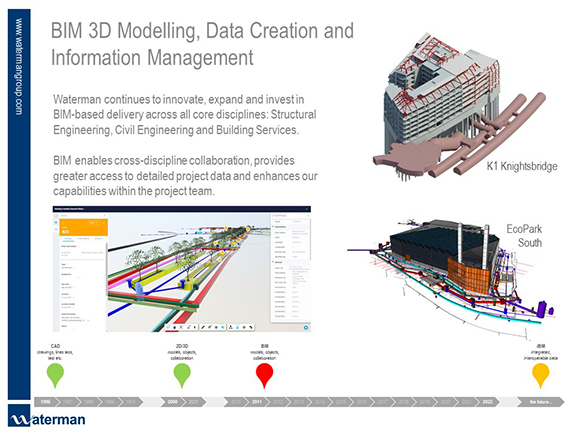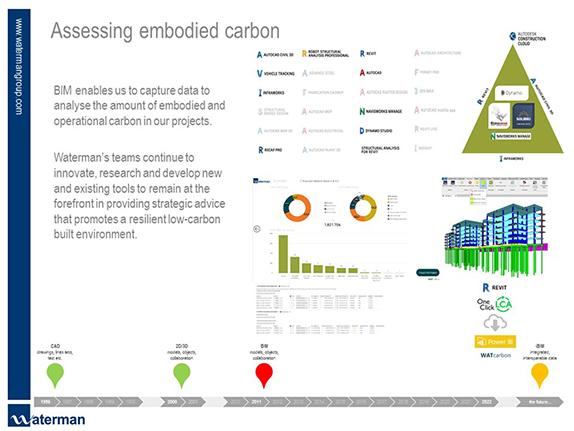- TOP
- Research and Development
- BIM/CIM Initiatives
 BIM/CIM Initiatives
BIM/CIM Initiatives
Examples of initiatives
Japan's Ministry of Land, Infrastructure, Transport and Tourism (MLIT) has been promoting the adoption of Building/Construction Information Modeling/Management (BIM/CIM) technologies, and we have been working with Japanese national and local governments to utilize BIM/CIM in our operations. Here, we introduce a few representative initiatives.
Using CIM for slope countermeasures associated with the widening of a channel
- Name of job: [FY2016 CIM Trial Project] Study on slope countermeasures for mountain excavation work along the Okozu Diversion Channel
- In the Okozu Diversion Channel Improvement Project, we used CIM to convert construction steps and geological data into a three-dimensional model to study slope countermeasures and construction plans for the widening of the channel.
This job was a CIM trial project for the Shinano River Office, Hokuriku Regional Development Bureau , MLIT. Through this project, we confirmed the following effects and issues by introducing CIM.
- Studying the construction plan with a 3D model made it easier to grasp the three-dimensionality and scale of the plan, which helped us to identify issues and make decisions more quickly. In addition, we were able to use the 3D model to identify problematic points in the construction plan.
- In the conceptual study of the road for construction, we checked the cut and fill earthwork and vertical profile of the road on the 3D model to consider its alignment. We were able to create an alignment plan while checking the extent to which the surrounding terrain would be affected.
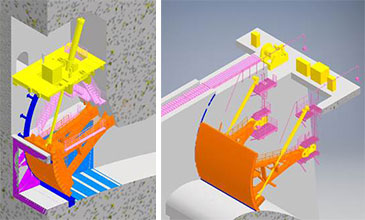
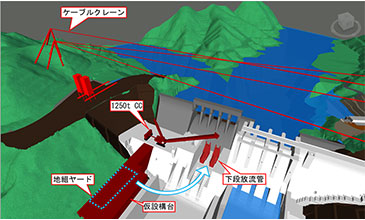
Creation of step-by-step illustrations of construction
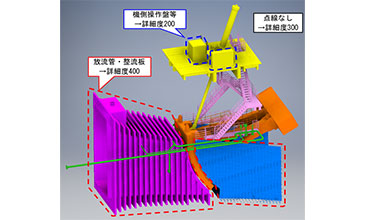
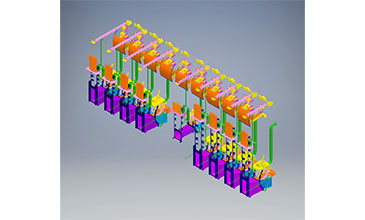
Reflecting geological data in the model
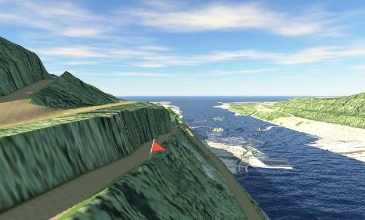
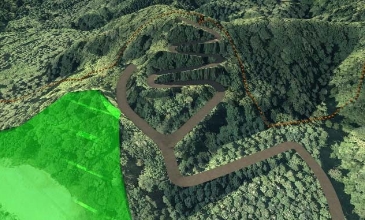
Applying CIM to the study of the road for construction
Using CIM in the design of a replacement bridge
- Name of job: [FY2016 CIM Trial Project] Detailed design of the new Nozumi Bridge
- CIM was used for the detailed design of a bridge associated with the Okozu Diversion Channel Improvement Project. We used 3D models to create easy-to-understand materials for consulting with related organizations as well as step-by-step illustrations of construction work that divided the bridge work into sections based on the project timeline. We also used the 3D models to ensure that the bridge's complex arrangement of vertical and horizontal reinforcement bars did not allow the bars to intersect.
This job was a CIM trial project for the Shinano River Office, Hokuriku Regional Development Bureau, MLIT. Through this project, we confirmed the following effects by introducing CIM.
- We used 3D bird's-eye view and other illustrations in the materials for consulting with related organizations, which helped to make consensus building more efficient.
- During the landscape study, we were able to visually check the completed state of the bridge from a user perspective.
- In the design of the superstructure, we partially modeled the intermediate support section, where reinforcement bars intersect with the steel material of the prestressed concrete (PC), in 3D. We checked the model for mutual interference and reflected our findings in the final design.
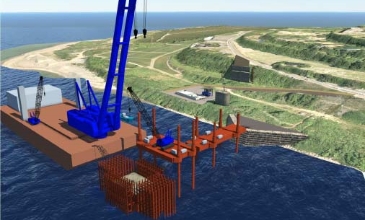
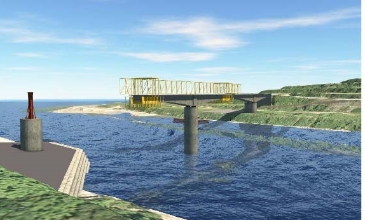
Study of construction steps
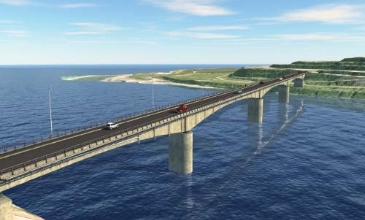
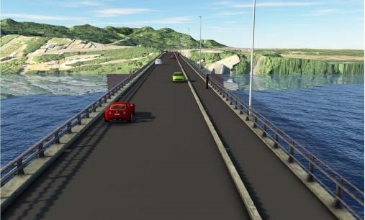
The completed model
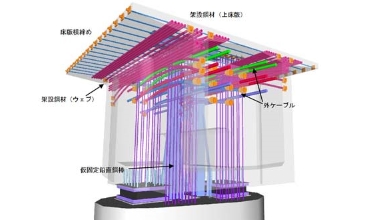
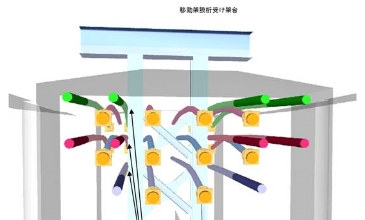
Illustrations used to check for interference between the reinforcement bars, PC steel material, and temporary frame
Creating and using a physical model from a digital 3D model
- Name of job: Undisclosed
- The photos shown here depict a physical 3D model of an expressway junction, which was made for publicity purposes to make it easier to grasp the junction's complex shape.
The physical model was created from a digital 3D model in CAD and printed with a 3D printer. The physical model made it possible to grasp the shape of the junction in three dimensions, which had the effect of making meetings and explanations much more understandable for participants.
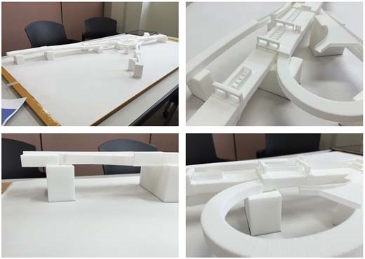
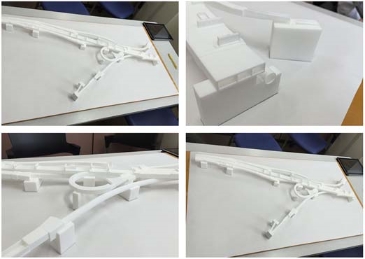
Photos of the physical 3D model of the junction
Examples of initiatives at Group companies
Our Group company, Waterman Group Plc. (head office: London), has been using BIM to create and visualize 3D models since around 2000. Below are some examples of models made for past projects.
